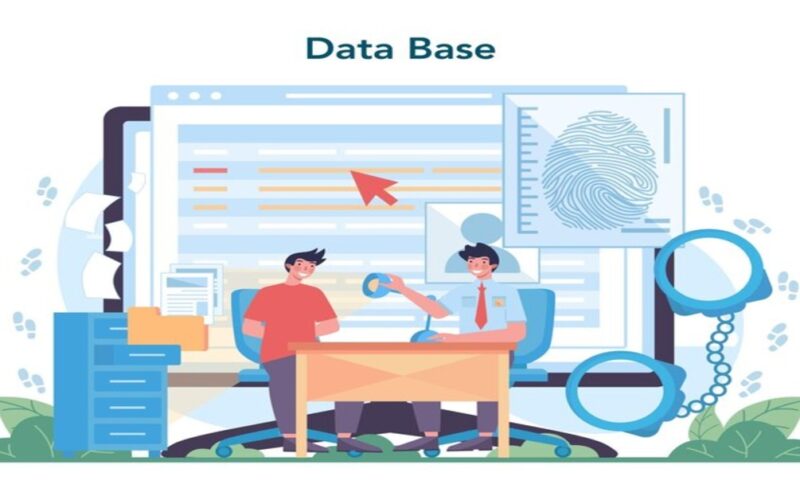Summary: Relational database organize data into structured tables, enabling efficient retrieval and manipulation. They ensure data integrity and reduce redundancy through defined relationships. With SQL support and various applications across industries, relational databases are essential tools for businesses seeking to leverage accurate information for informed decision-making and operational efficiency.
Introduction
What if you could instantly access any piece of information you need, without having to sift through piles of data? Imagine a world where businesses can make decisions based on real-time data insights. This is the power of a relational database.
Understanding Relational Databases
A relational database is a type of database that organizes data into structured tables. Each table consists of rows and columns, where each row represents a unique record and each column represents an attribute of that record.
This structure allows for easy organization and retrieval of data. The concept was introduced by E.F. Codd in the 1970s at IBM and has since become the backbone of many modern applications.
Basic Structure
- Tables: The primary structure in a relational database.
- Rows: Each row is a record, such as an individual customer or order.
- Columns: Each column holds specific attributes related to the record, like name, address, or order date.
Keys
- Primary Key: A unique identifier for each record in a table, ensuring no duplicate rows.
- Foreign Key: A field in one table that links to the primary key of another table, establishing relationships between tables.
Key Takeaways
- Relational databases use structured tables to organize data efficiently.
- Data integrity is maintained through primary and foreign key relationships.
- SQL enables powerful querying capabilities for data manipulation.
- They are widely used across various industries, including healthcare and finance.
- Relational databases reduce redundancy and enhance operational efficiency for businesses.
Read More: DBMS Architecture: A Deep Dive into Database Management Systems
How Does It Work?
Relational databases operate on the principle of relationships among data points. By using keys, different tables can be connected. For example, consider a simple business scenario:
- Customers Table: Contains customer information such as name, email, and phone number.
- Orders Table: Contains order details like order ID, product ID, and order date.
The relationship between these tables can be established using a foreign key in the Orders table that references the primary key in the Customers table.
This setup allows businesses to easily query and analyze data across multiple tables.
Advantages of Relational Databases
Relational databases come with numerous advantages that make them popular among businesses. These advantages make relational databases a foundational technology in modern data management, supporting various applications from finance to healthcare and beyond.
Data Integrity
Ensures accuracy and consistency through rules like referential integrity. This means that if a customer is deleted from the Customers table, all related orders must either be deleted or updated accordingly.
Reduced Redundancy
Data is stored once, minimizing duplication. For instance, instead of storing customer information in every order record, it is stored in one Customers table and referenced in the Orders table.
Efficient Data Retrieval
SQL (Structured Query Language) allows for powerful querying capabilities. Users can write complex queries to retrieve specific information quickly.
Flexibility
Changes to one table do not affect others, making it easier to maintain. For example, if a new attribute needs to be added to customers (like loyalty status), it can be done without altering the Orders table.
Scalability
As your business grows, relational databases can easily scale to handle more data without significant changes to the structure.
Statistics on Usage
According to recent surveys by DB-Engines, approximately 75% of all databases in use today are relational databases. This dominance is due to their reliability and ease of use across various industries, including finance, healthcare, and retail.
Types of Relationships
In relational databases, relationships are crucial for linking data across different tables. Understanding these relationships helps in designing efficient database schemas and ensures data integrity. There are three primary types of relationships:
One-to-One (1:1)
Each record in Table A corresponds to one record in Table B.In this relationship, a record in Table A corresponds to exactly one record in Table B, and vice versa.
This type is often used for separating sensitive data or when two entities need to be stored independently. For example, a person may have one unique identification number
Example: A person has one passport.
One-to-Many (1:N)
A single record in Table A can relate to multiple records in Table B.This is the most common type of relationship where a single record in Table A can relate to multiple records in Table B.
However, each record in Table B relates back to only one record in Table A. An example is a customer who can place multiple orders, but each order belongs to one specific customer.
Example: A customer can have multiple orders.
Many-to-Many (M:N)
Records in Table A can relate to multiple records in Table B and vice versa.In this relationship, multiple records in Table A can relate to multiple records in Table B.
To implement this relationship, a junction table is often created, containing foreign keys from both tables. For instance, students can enroll in multiple courses, and each course can have multiple students.
Example: Students enrolled in many courses, and each course has many students.
These relationships are established using primary and foreign keys, which help maintain data integrity.
Database Management Systems (RDBMS)
An RDBMS is software that facilitates the creation, management, and manipulation of relational databases. Some popular RDBMS include:
- MySQL
- PostgreSQL
- Oracle Database
- Microsoft SQL Server
These systems provide tools for data storage, retrieval, manipulation, security, and backup.
Features of RDBMS
Relational Database Management Systems (RDBMS) offer essential features that enhance data management, including ACID compliance for transaction reliability, multi-user access for collaboration, and robust security measures to protect sensitive information. These features ensure data integrity, consistency, and efficient performance across various applications.
ACID Compliance
Ensures reliable transactions through Atomicity (all-or-nothing transactions), Consistency (data remains valid), Isolation (transactions do not interfere), and Durability (completed transactions are permanent).
SQL Support
Allows users to perform complex queries easily. SQL commands like SELECT, INSERT, UPDATE, and DELETE enable straightforward data manipulation.
Multi-user Access
Enables simultaneous access by multiple users with built-in security measures to protect sensitive information.
Data Normalization
Reduces redundancy by organizing data efficiently across tables. Normalization involves dividing large tables into smaller ones and defining relationships between them.
Backup and Recovery Options
Most RDBMS offer robust backup solutions to ensure data safety against loss or corruption.
Real-world Applications
Relational databases are widely utilized across various industries, including healthcare, finance, and retail, for managing data efficiently, ensuring data integrity, and enabling informed decision-making through structured information retrieval.
Healthcare
Manage patient records while ensuring privacy and compliance with regulations like HIPAA (Health Insurance Portability and Accountability Act). Hospitals use relational databases to track patient histories, treatments, and billing efficiently.
Finance
Track transactions and customer accounts securely. Banks utilize relational databases for managing account details while ensuring high levels of security and compliance with financial regulations.
Retail
Analyze sales data to optimize inventory management and customer relations. Retailers use relational databases to manage stock levels and analyze purchasing trends effectively.
Education
Schools use relational databases for student records management—tracking grades, attendance, and course enrollments efficiently.
Case Study Example
Consider a retail company that uses a relational database to manage its operations:
The company has separate tables for customers, products, orders, and payments.
When a customer places an order online:
The system checks the Customers table for existing information.
It creates a new entry in the Orders table linked by a foreign key.
It updates inventory levels in the Products table automatically.
Finally, it generates sales reports for analysis.
This integration allows for real-time insights into sales trends and customer preferences while maintaining accurate records across all departments.
- Challenges: While relational databases offer many advantages, they also come with challenges:
- Complexity: Designing an efficient schema requires careful planning and understanding of relationships among data points. Poor design can lead to inefficient queries or difficulties in maintaining data integrity.
- Scalability Issues: As data volume grows—especially with big data applications—performance may degrade unless properly managed through indexing or partitioning strategies.
- Cost: Licensing fees for commercial RDBMS can be high compared to open-source alternatives like MySQL or PostgreSQL.
- Maintenance Overhead: Regular maintenance tasks such as backups, updates, and performance tuning are necessary but can require significant time investment from IT staff.
- Migration Challenges: Moving from one RDBMS system to another can be complex due to differences in SQL syntax or database features.
Future Trends
The landscape of databases is evolving rapidly. The future of relational databases involves advancements like cloud integration, AI-driven analytics, enhanced security features, and compatibility with NoSQL technologies, shaping how organizations manage and utilize data effectively.
Cloud Databases
More businesses are moving their relational databases to cloud platforms like Amazon RDS or Google Cloud SQL for scalability and cost-effectiveness.
Integration with Big Data Technologies
Relational databases are increasingly being integrated with big data tools like Hadoop or Spark for enhanced analytics capabilities.
NoSQL Alternatives
While relational databases dominate today’s market, NoSQL databases are gaining traction for specific applications requiring flexibility over strict schema adherence—particularly useful for unstructured data types like social media posts or sensor data from IoT devices.
Artificial Intelligence Integration
AI technologies are being integrated into RDBMS systems for smarter query optimization and predictive analytics capabilities.
Enhanced Security Features
As cyber threats grow more sophisticated, RDBMS providers are focusing on advanced security features such as encryption at rest and during transit as well as multi-factor authentication options for users accessing sensitive information.
Conclusion
Relational databases are essential tools for organizing and managing data effectively across various sectors—from healthcare to finance to retail industries. Their structured approach allows businesses to make informed decisions based on accurate information while minimizing redundancy through efficient design principles like normalization.
By understanding how they work and their advantages over other types of databases—including flexibility in handling relationships among diverse datasets—organizations can leverage relational databases not just as storage solutions but as strategic assets driving success in their operations.
Frequently Asked Questions
What is the Main Advantage of Using A Relational Database?
The main advantage of a relational database is its ability to maintain data integrity and reduce redundancy. By organizing data into structured tables with defined relationships, it allows for efficient data retrieval and manipulation, ensuring accurate information across various applications.
How Does SQL Work in Relational Databases?
SQL, or Structured Query Language, is the standard language used to interact with relational databases. It allows users to perform operations like querying, updating, inserting, and deleting data. SQL commands enable complex queries to retrieve specific information quickly and efficiently from multiple tables.
What are the Common Types Of Relationships in A Relational Database?
Common types of relationships in a relational database include one-to-one (1:1), one-to-many (1:N), and many-to-many (M:N). These relationships are established using primary and foreign keys, allowing for efficient data management and retrieval while maintaining data integrity across interconnected tables.




